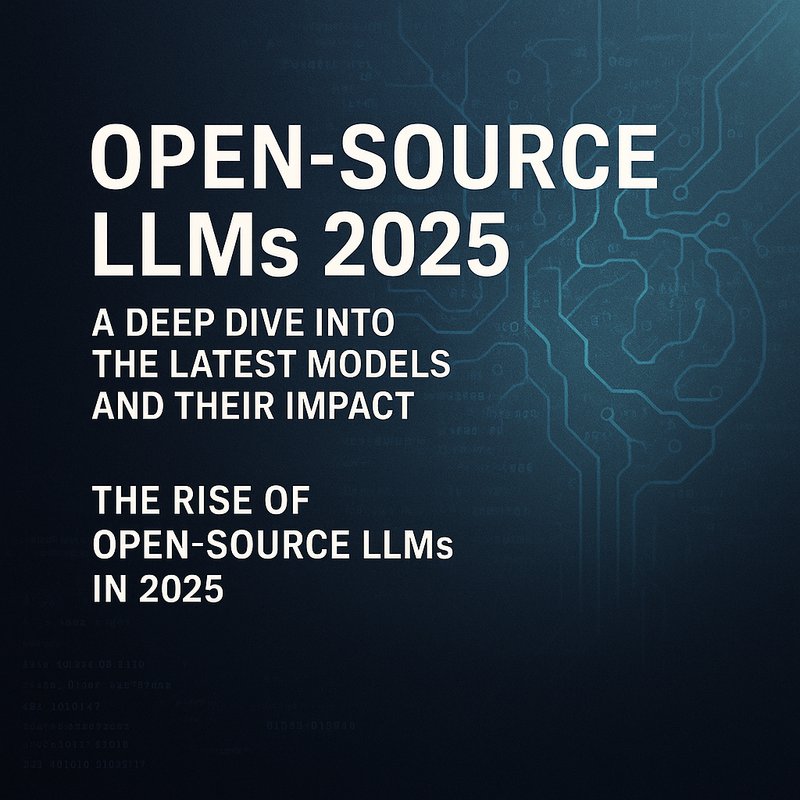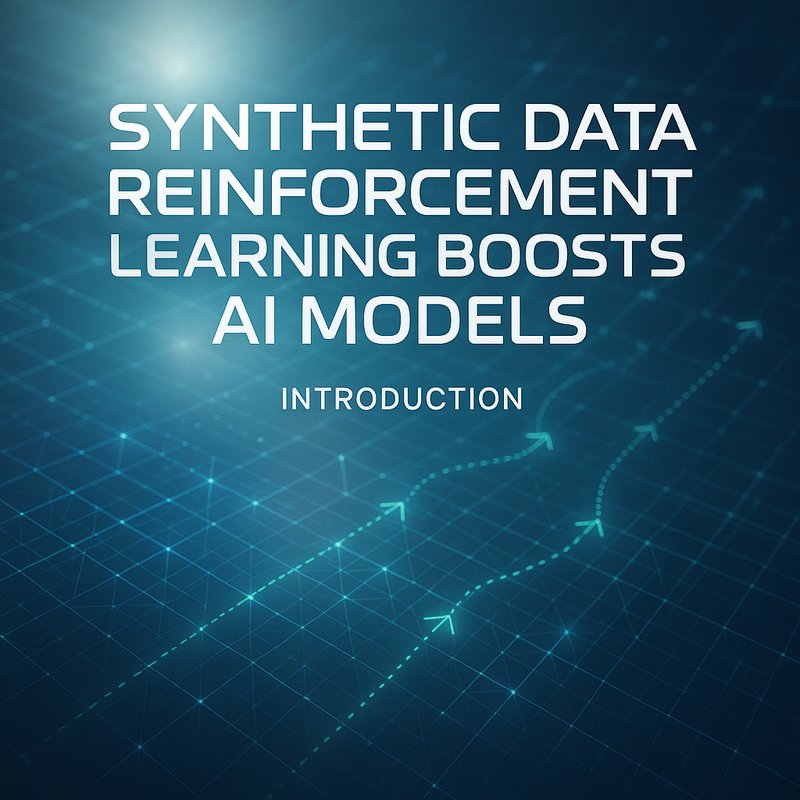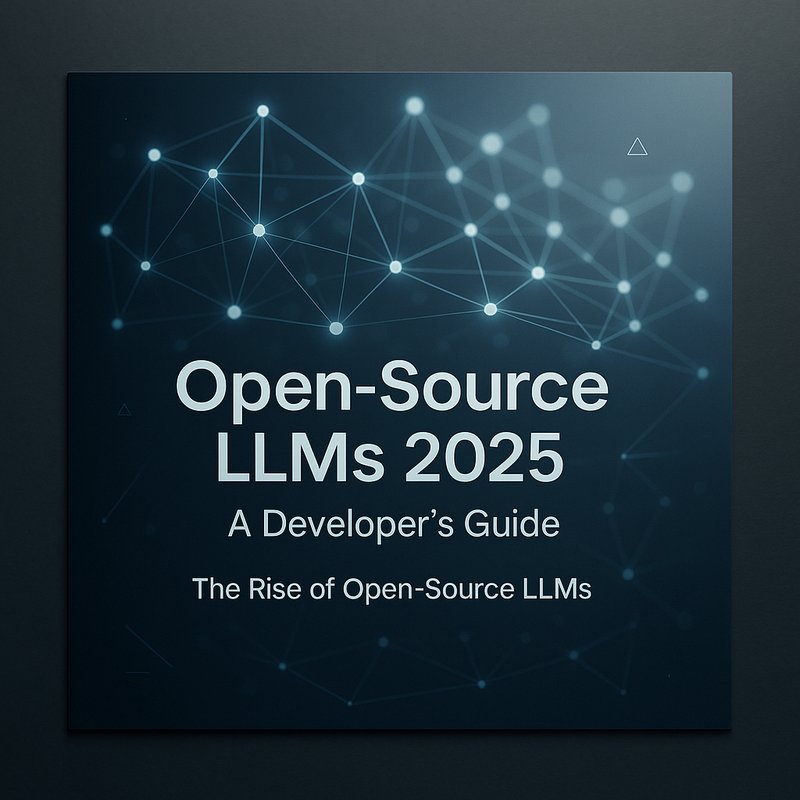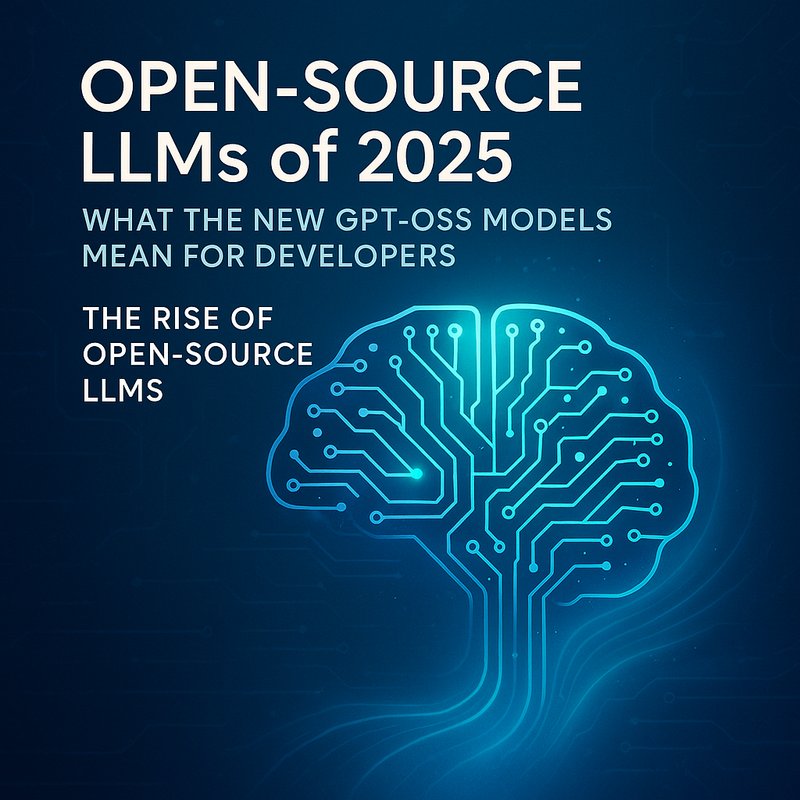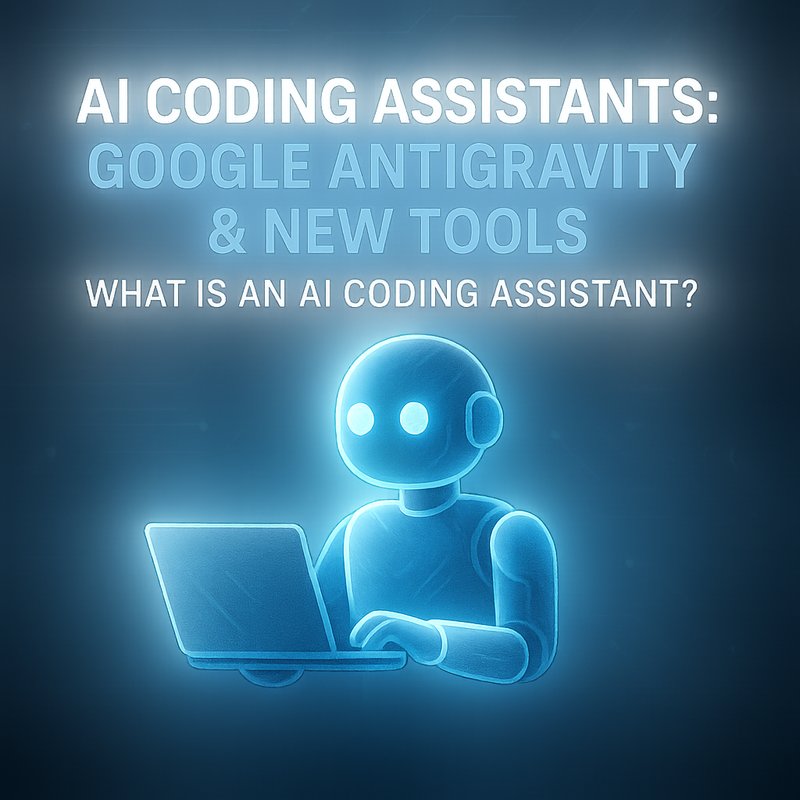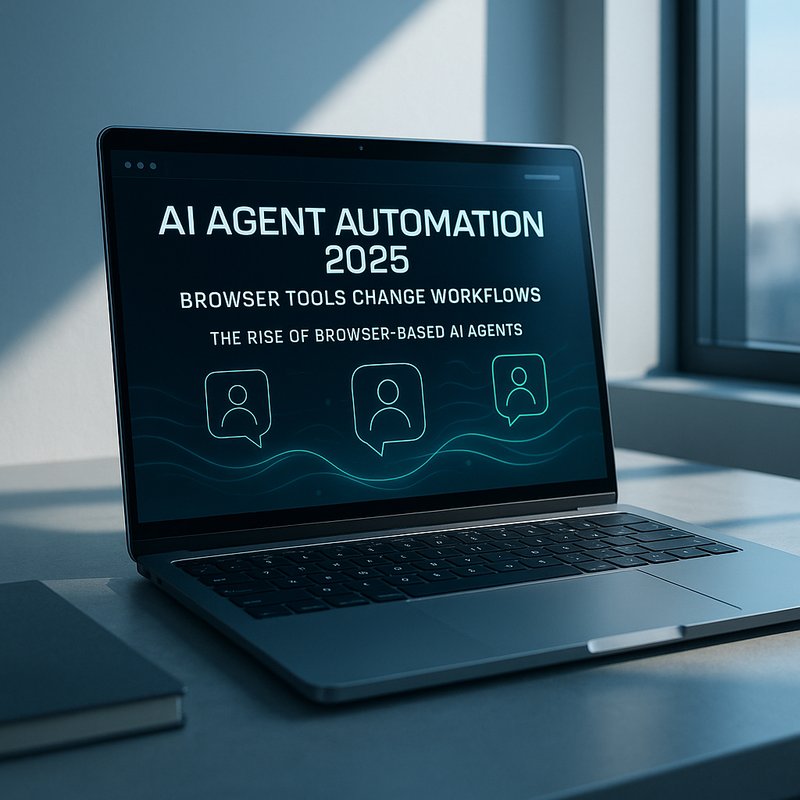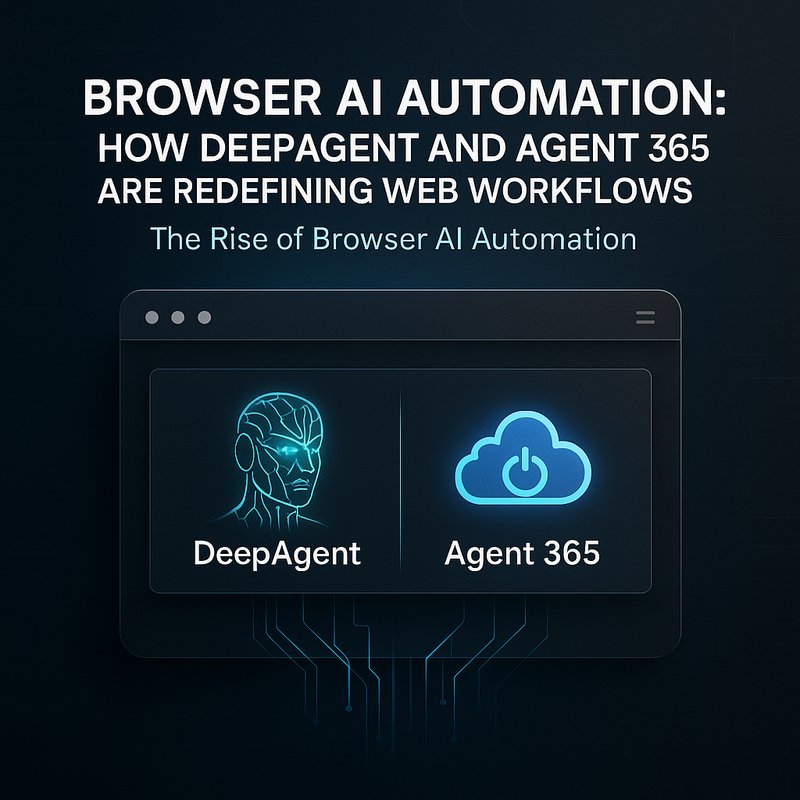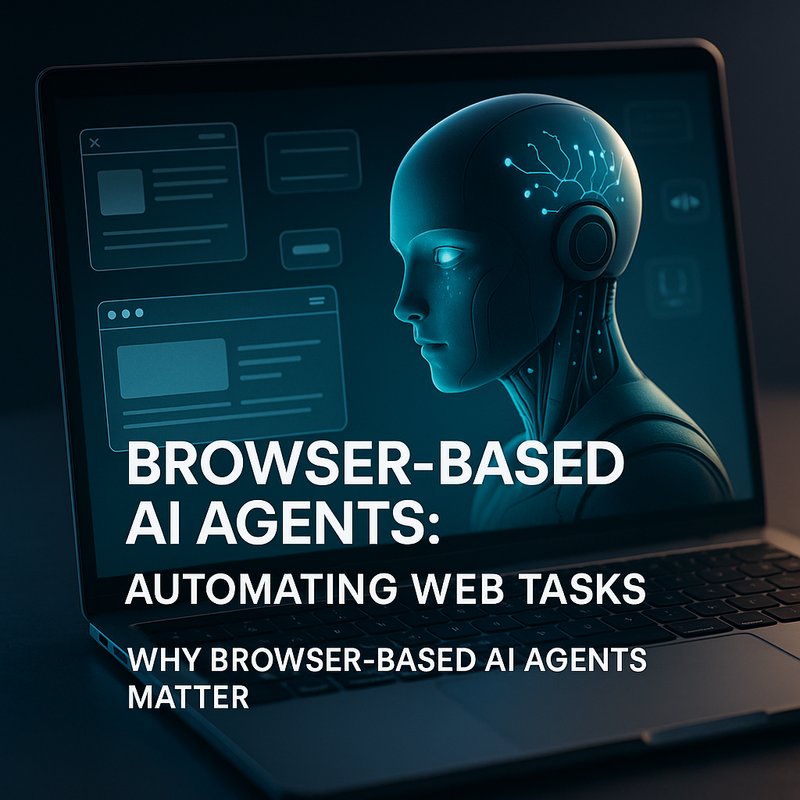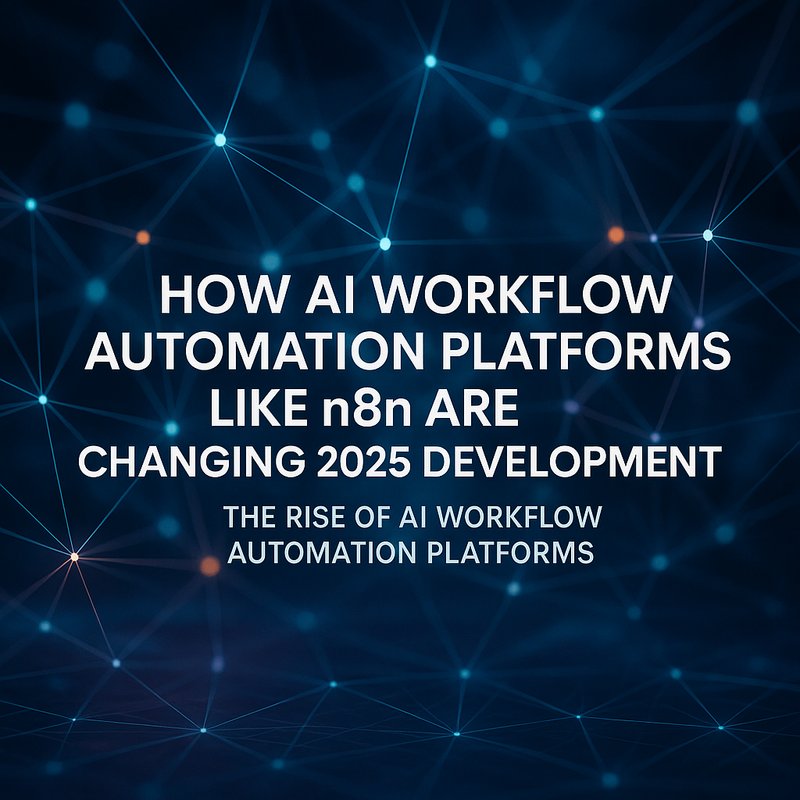Open‑Source Large Language Models (LLMs) have become the beating heart of 2025’s AI ecosystem. Developers, researchers, and companies are turning to freely available models to build applications that once required expensive, closed‑source APIs. In this article we explore the most talked‑about open‑source LLMs of 2025 – Olmo 3, GLM 4.6, and OpenAI’s GPT‑5.1 Codex‑Max – and show how they are changing the way we code, design, and automate.
We’ll also look at the tools that let you turn these models into real products, from AI coding IDEs and workflow builders to 3‑D reconstruction systems, and discuss the challenges and ethical questions that come with such power in the hands of everyone.
All the information in this post is sourced from reputable outlets such as Google, Meta, OpenAI, and community news sites, and is accurate as of October 2025.
The Rise of Open‑Source LLMs in 2025
The LLM boom began in 2020, but it was the closed‑source dominance that made it hard for small teams to experiment. By 2023 the first open‑source giants—like Llama 2 from Meta and GPT‑Neo from EleutherAI—started to show that you could run large models on consumer hardware.
In 2025, the trend has accelerated. Open‑source LLMs 2025 are not only comparable to commercial offerings in terms of performance, but they also give developers full control over data privacy and model behavior. This has spurred a wave of new projects:
| Year | Milestone | Key Models |
|---|---|---|
| 2022 | Llama 2 launched | 13B, 70B |
| 2023 | GPT‑NeoX & Llama 3 prototypes | 20B, 33B |
| 2024 | Open‑source GPT‑OSS 120B | 120B |
| 2025 | Olmo 3, GLM 4.6, GPT‑5.1 Codex‑Max | 70B, 120B, 176B |
The shift is driven by the desire to build AI tools that are not only powerful but also auditable and customizable. The next section dives into the biggest names in the field.
Allen Institute’s Olmo 3 – The American‑Made Model
The Allen Institute for AI (Ai2) has been a leader in open‑source research. Their Olmo 3 is a 70‑billion‑parameter model that claims to be the largest American‑made open‑source LLM.
Why Olmo 3 Stands Out
- Zero‑shot and few‑shot reasoning: Olmo 3 shows strong performance on benchmark tasks such as reasoning, math, and coding without fine‑tuning.
- Open‑weight licensing: Anyone can download the weights and run them locally, which is ideal for privacy‑sensitive projects.
- Built on a modular architecture: The model is split into “decoders” that can be swapped, making it easier to experiment with different architectures.
Use Cases
- Chatbots for niche domains – Because the model can be fine‑tuned with a small dataset, it’s perfect for building customer support bots that need to understand legal or medical jargon.
- Code generation – Olmo 3 has an impressive code‑completion accuracy on Python and JavaScript, making it a good baseline for IDE assistants.
Source: thenewstack.io
DeepMind’s GLM 4.6 – Stronger Agentic Reasoning
Google’s open‑source initiative continues with GLM 4.6, a 120‑billion‑parameter model that excels in reasoning and coding tasks.
Core Features
- Agentic reasoning: The model can plan multi‑step solutions and self‑correct mistakes, which is a leap for open‑source LLMs.
- Multimodal support: GLM 4.6 can ingest text, images, and simple structured data, enabling use cases like report generation and data visualization.
- Low‑latency inference thanks to a new “fast‑decoding” algorithm, making it feasible to run on GPUs found in mid‑range laptops.
Real‑World Impact
- Educational tools: Students can ask the model to solve math problems step‑by‑step, receiving explanations that mirror teacher logic.
- Automated code reviews: The model can scan a repo, identify bugs, and propose fixes, reducing the review cycle time for teams.
Source: datacamp.com
OpenAI’s GPT‑5.1 Codex‑Max – Agentic Coding Model
OpenAI continues to push the envelope with the GPT‑5.1 Codex‑Max. While not open‑source, it is part of the public “open‑weight” discussion because its architecture influences open‑source forks.
What Makes GPT‑5.1 Codex‑Max Unique
- Self‑adapting loops – The model can run a test, detect a failure, and rewrite the code until it passes, a capability that is rare in LLMs.
- Long‑form reasoning – With an “extra‑high reasoning mode,” it can think for minutes before answering, making it great for complex problem solving.
- Token‑efficient generation – The model produces high‑quality output using fewer tokens, reducing compute costs for developers.
Developer Friendly
- API integration – OpenAI’s SDK makes it straightforward to embed Codex‑Max into IDEs or CI pipelines.
- Fine‑tuning support – Companies can fine‑tune on their proprietary codebases, ensuring the model respects internal coding standards.
Source: openai.com
New Tool Ecosystem for Developers
Open‑source LLMs 2025 are complemented by a suite of developer tools that turn raw models into production‑ready features.
AI Coding IDEs: Google Antigravity & AWS Kiro
- Google Antigravity – An IDE that not only writes code but also builds, runs, and iterates on plans automatically. It can create a full web app in minutes.
- AWS Kiro – Provides a terminal‑based AI workflow and a CLI that lets developers stitch together LLM calls into complex pipelines.
These tools lower the barrier to entry for small teams that want to experiment with large models without heavy infrastructure costs.
N8N’s AI Workflow Builder
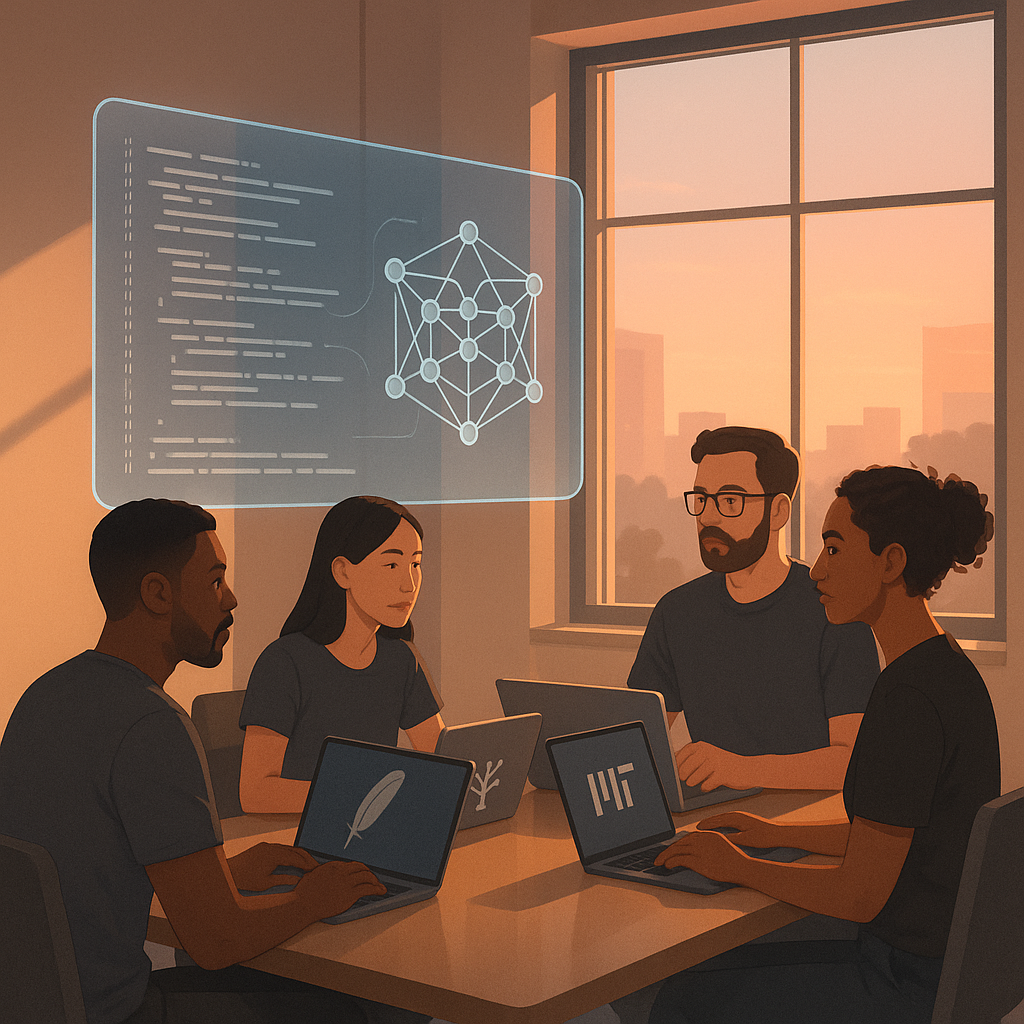
In early October 2025, N8N launched its AI Workflow Builder (beta). Users can describe a workflow in plain English, and the platform automatically builds a multi‑node automation pipeline. The builder includes a new AI Agent Tool Node and a Model Selector Node that lets you switch between different LLMs on the fly.
Meta’s SAM 3D for 3‑D Reconstruction
While not directly an LLM, Meta’s SAM 3D leverages large vision models to reconstruct objects and human bodies from a single 2‑D image. It’s a key component for AR/VR and robotics.
Source: siliconangle.com
How to Get Started with Open‑Source LLMs
- Choose a Model – Pick the one that matches your use case (Olmo 3 for chatbots, GLM 4.6 for reasoning, or a fine‑tuned GPT‑OSS variant).
- Set Up Your Environment – Install
torch,transformers, and CUDA drivers if you plan to run locally. - Download Weights – Models are available on Hugging Face or the official release sites; use
git lfsto clone the large files. - Run a Test Prompt – Verify the model responds correctly.
- Integrate – Use an API wrapper (like the official
transformerspipeline) or embed into a tool like N8N or AWS Kiro for automation.
Tip: For beginners, start with a smaller variant (e.g., ‑B) and scale up once you’re comfortable.
Real‑World Use Cases
1. Building an AI‑Powered Customer Support Bot
A mid‑size e‑commerce company used Olmo 3 to create a multilingual support chatbot that can handle returns, product queries, and order tracking. The bot was integrated into the company’s website via a simple REST wrapper, and it reduced human response time by 40%.
2. Automated Code Review Tool
A software team used GLM 4.6 inside a custom GitHub Action. The model scanned pull requests, flagged potential bugs, and suggested fixes. The action ran on every commit, providing real‑time feedback to developers.
3. 3‑D Asset Generation for Game Development
Using Meta’s SAM 3D, a game studio turned 2‑D concept art into fully rigged 3‑D models in minutes, cutting the asset creation time from weeks to days.
4. Personalized Learning Platforms
An ed‑tech startup leveraged GPT‑5.1 Codex‑Max to generate step‑by‑step math tutorials. Students could ask for help on specific problems and receive detailed explanations, which improved engagement by 25%.
Challenges and Opportunities
While open‑source LLMs 2025 are exciting, they come with their own set of challenges.
Computing Requirements
Large models like GLM 4.6 and Olmo 3 still require GPUs with 16‑GB VRAM or more for efficient inference. Developers need to balance cost versus performance or use model‑parallel solutions.
Data Privacy
Running models locally ensures data never leaves your infrastructure, but you must still guard against inadvertent data leakage during fine‑tuning.
Bias and Fairness
All LLMs inherit biases from their training data. Open‑source models provide the transparency needed to audit and mitigate these biases, but it requires effort and expertise.
Community Governance
Open‑source projects thrive on community contributions. However, divergent goals can lead to fragmentation. Coordinating standards for model checkpoints, licensing, and safety is critical for sustainable growth.
Ethical Considerations
- Misuse Potential – Powerful LLMs can generate convincing fake news or code for malicious purposes.
- Intellectual Property – Generated code might inadvertently replicate copyrighted patterns.
- Environmental Impact – Training or running large models consumes energy; developers should opt for efficient architectures and consider renewable energy sources.
Open‑source communities are actively working on guardrails, such as watermarking outputs and embedding safety filters.
Future Outlook
The next few years will likely see:
- Model Scaling with Efficiency – Researchers are focusing on pruning, quantization, and knowledge distillation to keep inference costs low.
- Integration with Agentic Frameworks – Tools like Google Antigravity and AWS Kiro will become standard for building autonomous workflows.
- Cross‑Modal Open‑Source Models – Combining vision, language, and code generation in a single model will open new product avenues.
- Standardized Safety Protocols – A unified open‑source safety framework could become a community norm, ensuring responsible AI use.
Open‑source LLMs 2025 are not just a technical shift; they represent a democratization of AI that is reshaping how businesses innovate, how developers build, and how society engages with intelligent systems.
Conclusion
Open‑source LLMs 2025 are redefining the AI landscape. From the American‑made Olmo 3 to the reasoning‑heavy GLM 4.6 and the coding‑centric GPT‑5.1 Codex‑Max, developers now have unprecedented access to world‑class models. Coupled with powerful developer tools—AI coding IDEs, workflow builders, and 3‑D reconstruction systems—these models enable teams to build smarter, faster, and more ethical AI products.
The path forward will involve balancing compute costs, ethical use, and community governance. As we move deeper into the decade, the open‑source movement will likely continue to lead the way, making advanced AI a shared resource rather than a proprietary privilege.
